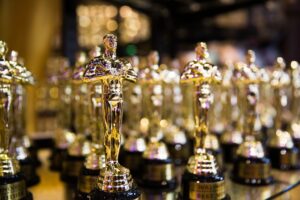“If you don’t know where you’re going, you’ll end up someplace else.” —Yogi Berra
It’s always the right time to set goals. One of my goals for 2019 is to blog more
Fact: Success takes determination, focus, and effort. Working aimlessly without a plan is the hamster wheel approach and will result in wasting a lot of time on non-productive activities.
As Yogi was trying to say, you won’t get where you want to go if you don’t know where that is. This means creating a clear, detailed roadmap.
Even short-term goals need concrete steps to turn them into reality. If you’ve made resolutions that fail every year, or have hopes and dreams that never seem attainable, chances are you’re orienting your goals incorrectly.
It’s time to take a step back and reevaluate.
When identifying your goals, use this time-honored 4-step checklist and make sure they are:
Specific, quantifiable, realistic, and time-sensitive
Let’s break that down.
Specific:
The first step is to identify a specific, clear-cut goal. When an objective is too vague, it is impossible to map out the important steps needed for achievement. Avoid generality – it’s the enemy of focus.
“Get famous” is not a specific goal. “Get a job with a TV network” is. Do you see the difference? Vague, wishy-washy statements are not actionable or inspiring. The more specific you can be, the clearer the next steps become.
Quantifiable:
Your goal must be measurable. In order to assure success, you need to be able to objectively track your progress and make the necessary changes to improve.
“Increase my online presence” is not quantifiable. Reframing this desire as something more measurable may sound like: “Add 100 new connections on LinkedIn” or “Start producing one livestream video per week.” These quantifiable, measurable goals are attainable and easily tracked.
Realistic:
Your goal must be attainable. To choose a feasible goal, you need to know what is possible and probable for yourself. One way to go about this is to complete a self-audit. Think about your own strengths, weaknesses, capabilities, and preferences. Then identify what essential skills or attitudes are necessary to achieve your goal. Do you have what it takes right now? Or should you focus on growing your strengths so that your next goal becomes achievable?
Time-Sensitive
Your goal must have a deadline. Without a timetable, you won’t be able to measure your success, and you won’t have the motivation to move forward. Is your goal short-term, mid-term, or long-term? My colleague Maria Pendolino and I like to define these goals in the Starbucks vernacular: Tall, Grande, and Venti.
Here are some examples of goals that are specific, quantifiable, and time-sensitive: (Are they realistic? Only YOU know that answer.)
Complete 3 videos by the end of the month
Get a job at a TV station before the end of my course
Attract 10 new paying clients this quarter
Time to Map it Out!
With a well-thought-out and clear goal, you will be able to craft an action plan with a timeframe, and you’ll have explicit steps that you can cross off a list so you can measure your progress.
Map out the steps that will get you to where you need to go – even the ones that might seem insignificant. I promise you, nothing is too small when it comes to goal setting. It is perfectly fine to have a long list. In fact, being able to cross off a lot of small things actually releases dopamine in your brain, which will keep you motivated!
Successful goal setting may require a change in your mindset and stepping outside of your comfort zone. Get to work in identifying your true vision of where you want to be so you can create a blueprint for success.
I work with many aspiring TV hosts and media personalities and one of the first steps we take is developing specific, realistic, and measurable goals. If you have a similar ambition, read my book, How to Get Your Foot in the Door: Television Hosting and Presenting for further guidance on creating goals that are right for you.



